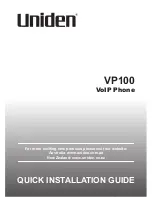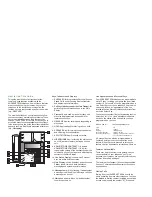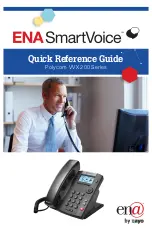
TD 93021US
17 July 2017 / Ver. PF3
56
Installation Guide
teleCARE IP
6
Peripherals
The switch modules all have the same basic format and can be mounted as a single unit on a single
backplate or as a double unit on a double backplate.
The switch modules have one, two or three buttons with LEDs and some switch modules have a buzzer.
The functions of the buttons and buzzer are determined by the software when system is configured using
the system manager (NISM).
6.1
Preparation
It is important to refer to the following teleCARE IP switch module installation instructions for complete
electrical connection and assembly details before starting the installation.
Ensure that the electrical power to the equipment is switched off before connecting the switch modules.
The Ingress Protection of the switch modules is IP40, therefore it is important that the area in which the
teleCARE equipment is to be installed must be clean, dry and weatherproof.
The walls on which the switch modules are to be installed should be finished (painted, wall papered, etc.)
before the switch modules are installed.
It is important to ensure that a minimum of 14in (35cm) of free cable is pulled through at every location
where teleCARE IP switch modules are to be installed.
It is important to have the appropriate lengths of stripped cable and exposed copper wire.
6.2
Installation Instructions
This section describes the basic installation of the following devices:
•
“Bedside Module (NIBM2)” (details on page 68)
•
“Medical Rail Socket (NIMS2)” (details on page 72)
•
“Door Side Module (NIDM)” (details on page 77)
•
“Pull Cord Module - Active (NIPC-W3A)” (details on page 78)
•
“Toilet Cancel Module - Active (NITC-XXA)” (details on page 80)
•
“Pull Cord Module - Passive (NIPC-XXP)” (details on page 81)
•
“Toilet Cancel Module - Passive (NITC-XXP)” (details on page 82)
•
“Pull Cord Module (NIPC2) Active and Passive” (details on page 83)
•
“Duty Selector (NIDS)” (details on page 94)
•
“Card Reader (NICR)” (details on page 97)
•
“Speech Module (NISP)” (details on page 101)
•
“Room Display (NIRD)” (details on page 103)
•
“Television Interface Module” (details on page 110)
•
“Sunblind Control Module” (details on page 112)
Note:
In all descriptions that follow, the
button represents the Emergency Call
function.
















































